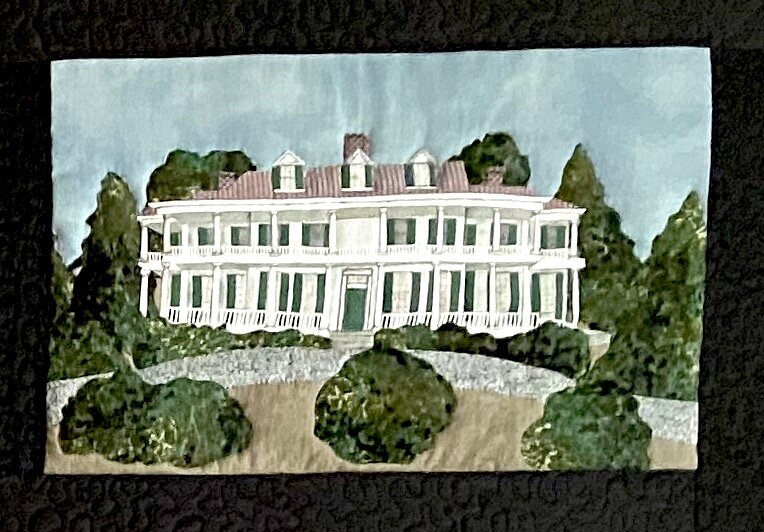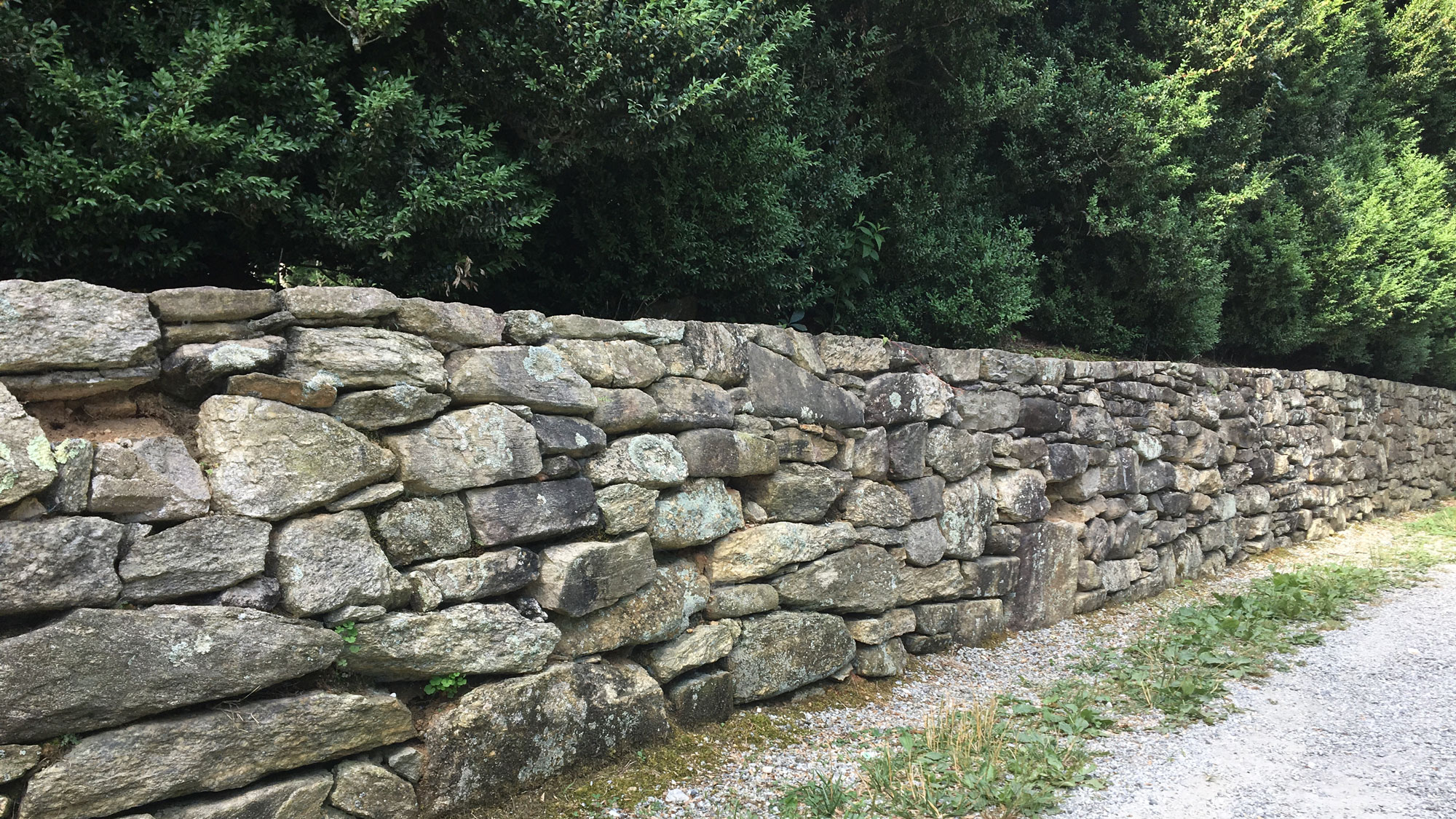Village of Flat Rock Quilt
/The Village of Flat Rock quilt was created as a group endeavor to highlight the history of Flat Rock and hangs in Village Hall. Several local artisans collaborated to re-create the history of Flat Rock in fabric and thread. The quilt is comprised of 23 panels - several of which depict famous Flat Rock homes.
The following descriptions of those panels were written by noted Flat Rock historian, Louise Howe Bailey. You can read the full description of the quilt here.
Mountain Lodge
Charles Baring, a member of the Baring Brothers Banking family in England, found in Flat Rock the healthful climate he sought for his British-born wife Susan. Lifetime heiress of considerable property left her by her fifth husband, James Heyward of Charleston, Susan brought wealth into the pioneer settlement, and with it Baring purchased four hundred acres on which to establish a summer home, Mountain Lodge, built on the order of an English country estate. Baring continued to acquire land until he ultimately owned some three thousand acres, much of which he sold to other Charlestonians desiring summer homes in Flat Rock.
Argyle
About the time of Baring’s arrival in Flat Rock, Judge Mitchell King, a Scotsman then living in Charleston, traveled to Tennessee in the interest of a proposed railroad linking the southern seaboard with navigable waters of the West. During a few days’ rest at the Flat Rock Inn, King found the health of a member of his family so greatly improved that he immediately purchased land and arranged to have a summer home built, calling it Argyle after his wife’s ancestral home in Scotland. King continued to acquire land, much of it for the price of twenty-five cents an acre, until he owned four thousand acres. In 1841, he settled the issue of where the seat of Henderson County would be placed by donating fifty acres for the town of Hendersonville.
Saluda Cottages
Coastal South Carolinians came to Flat Rock, calling it their "little Charleston of the mountains." Among them was Count Marie Joseph deChoiseul, the French consul to Charleston. He built Saluda Cottages, a small two-story house with two houses for employees just south of it. The deChoiseuls remained at Saluda Cottages until 1841, when "The Castle," where the Countess and her son and daughters would remain year-round, was ready for occupancy. The original house was the center portion of today’s Chanteloup.
Saluda Cottages had been so called because it lay near the Saluda Path, the first road to open Saluda Gap to wagons traveling from South Carolina.
Woodfield Inn
Woodfield Inn, originally Farmer Hotel, opened in 1850, financed by ten summer residents contributing one thousand dollars each. Henry Tudor Farmer, Susan Baring’s nephew, built the hotel and then bought it in 1853, operating it until his death. During the Civil War, it provided haven to coastal South Carolinians, and for a time a company of soldiers remained on the grounds for the safety of the people in residence.
Glenroy (Kenmure)
Dr. Mitchell King, a son of Judge King, built Glenroy, now known as Kenmure, around 1850. After graduation from the Medical College of South Carolina, King had sought further study in Germany, where he became friends with a fellow student Otto von Bismarck. Their correspondence continued throughout their lives and is now in the Library of Congress in Washington. At Glenroy, Dr. King built an office behind the house and there carried on his medical practice. When an epidemic of yellow fever struck the Jacksonville, Florida, area in the 1880s, Dr. King, realizing the disease did not occur at higher elevations, urged the Florida doctors to send convalescent patients to an infirmary he set up for them in Hendersonville. Thus the Hendersonville area became known to Florida residents, and a thriving tourist business has resulted.
Beaumont
Beaumont, built of stones quarried from the "great flat rock," was originally the summer home of Andrew Johnstone, a rice planter of Georgetown, South Carolina, and his family. During the War Between the States Johnstone was shot and killed at Beaumont by a band of renegades. His family sold the property, a later owner being Frank Hayne, at one time a "cotton king" of New Orleans.
Many Pines
Many Pines was built in 1847 by James Pringle of Charleston. Later owners were Arthur Barnwell and Augustine Smythe, also Charlestonians.
Chanteloup
While visiting their good friends the Barings’ in 1831, Xavier de Choiseul purchased 205 acres on Mud Creek. It was on this property that de Choisuel built the Saluda Cottages ) to live in while Chanteloup was being built. Chanteloup, originally known as The Castle got its’ name because it was made completely out of stone and sat on a hill very similar to the castles in Europe.












